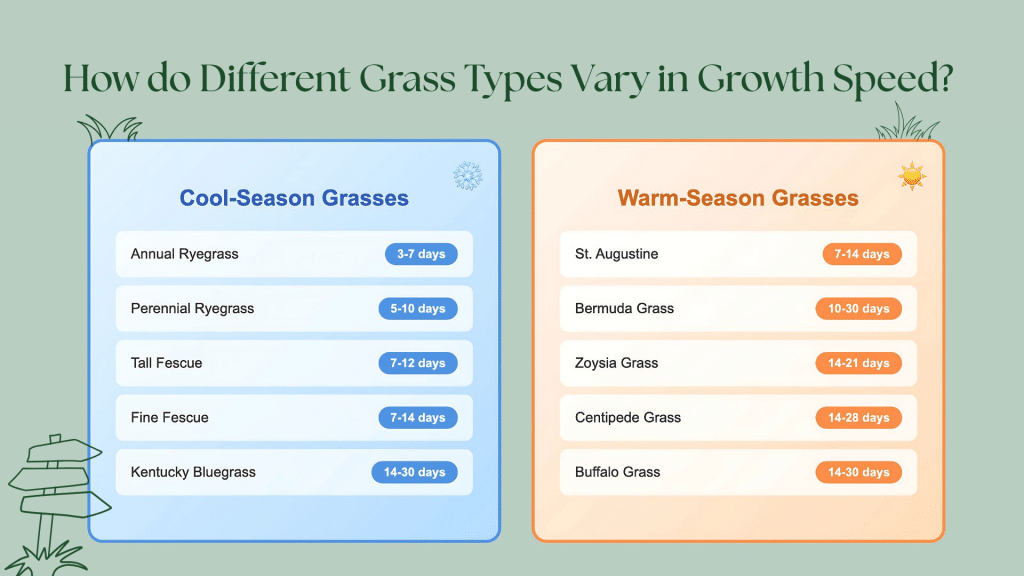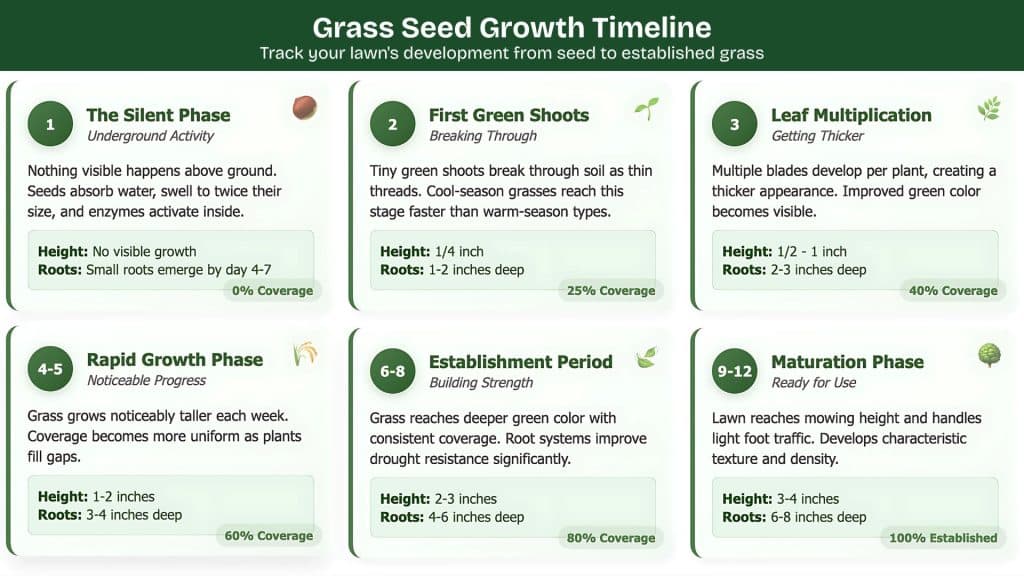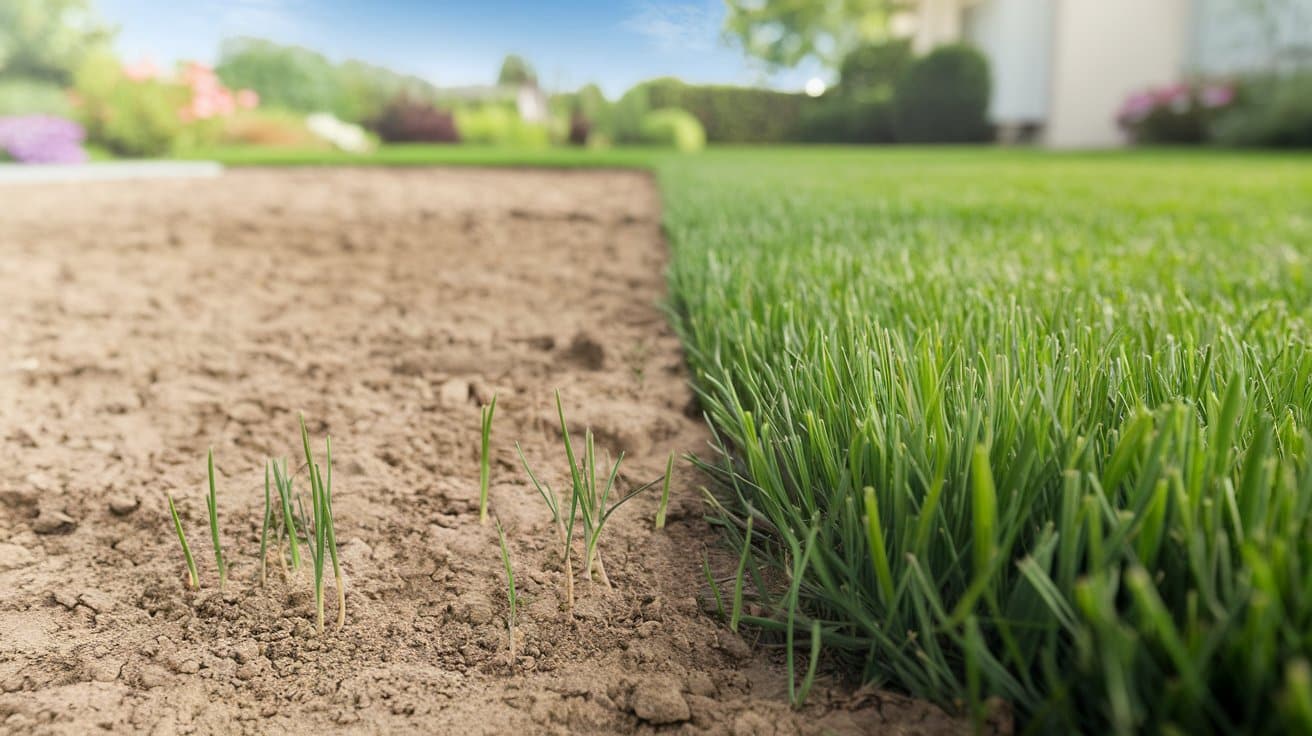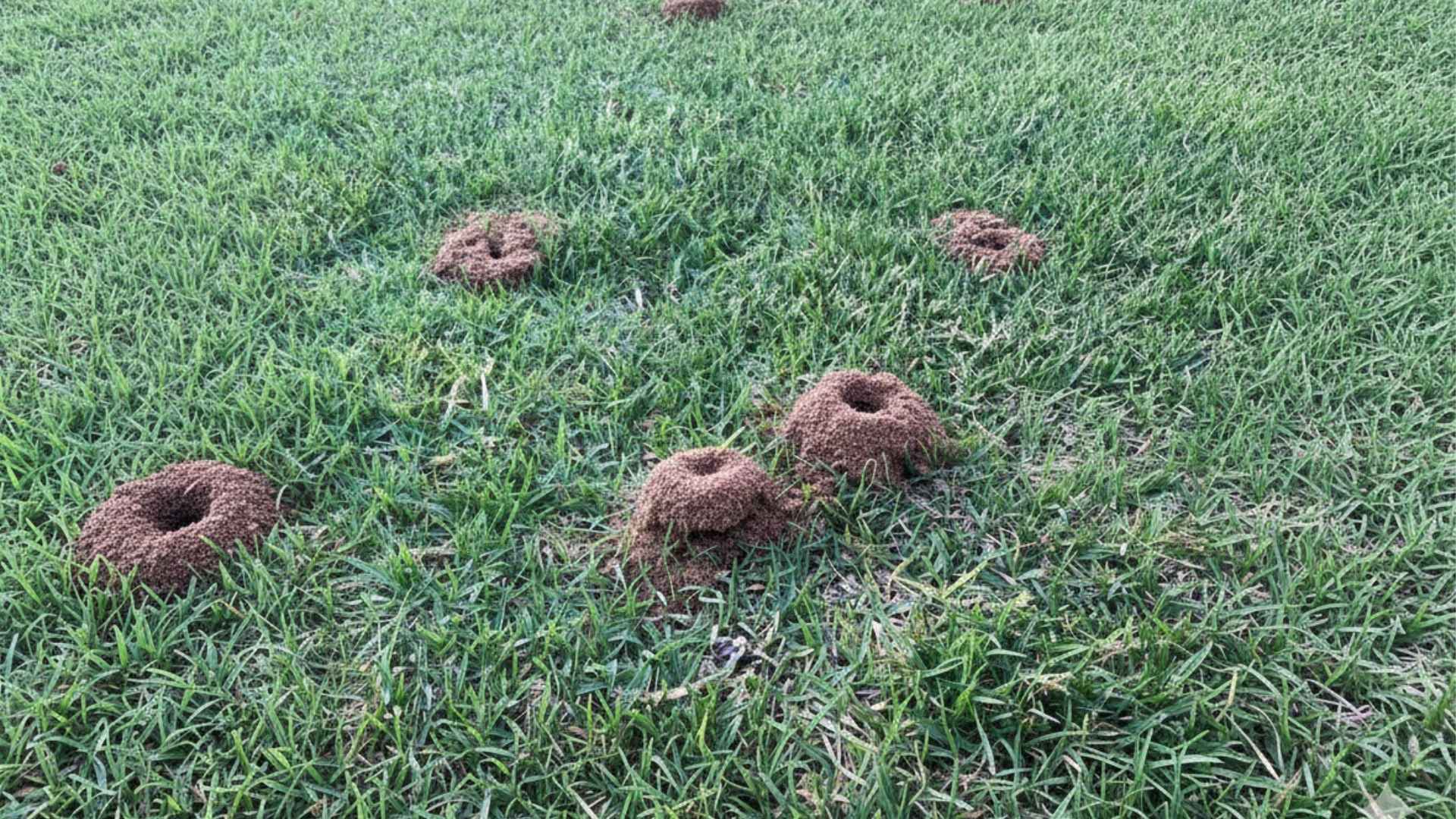Ever wondered why your neighbor’s lawn looks thick and green while yours still shows patches of bare soil?
The secret lies in understanding grass seed growth timing and the right care methods. Growing a lush lawn from seed requires patience and proper knowledge. It starts with understanding the stages of grass seed growth and the basics of grass seed germination.
Different grass types have varying growth rates, and several factors can speed up or slow down the process. Some seeds sprout within days, while others take weeks to show their first green shoots.
This guide covers everything you need to know about grass seed growth timelines. You’ll learn about germination periods, growth factors, weekly development stages, and proven care techniques.
By the end, you’ll have a clear roadmap to grow a healthy lawn that becomes the envy of your neighborhood.
How Long Does It Take for A Seed to Germinate and Grow?
A grass’s growth involves three key stages from start to finish. Each stage has its timeline and requirements. Knowing these phases helps you plan your lawn care properly. These developmental phases guide watering, mowing, and traffic limits early on.
- Germination happens when the seed coat breaks open and the first tiny roots and shoots appear.
- Growth refers to the period when grass blades develop and spread across your lawn area.
- Full establishment means your grass has formed a thick, mature lawn that can handle regular foot traffic.
The timeline varies based on grass type and conditions. Cool-season grasses show faster results in spring and fall. Warm-season varieties prefer summer heat and take longer to start.
How long grass seeds take to grow depends on your grass type. Some varieties germinate within 5 to 10 days under ideal conditions. Others need 2 to 3 weeks before green sprouts appear.
The complete process from seed to established lawn spans several months. Fast-growing types achieve good coverage in 6 to 8 weeks. Slower varieties require 10 to 12 weeks or more.
Temperature, moisture, soil quality, and seed variety determine your timeline. How long for grass seed to grow also depends on whether you are starting a new lawn or filling bare patches.
How Do Different Grass Types Vary in Growth Speed?
Grass types fall into two main categories based on growing conditions. Cool-season grasses thrive in moderate temperatures during spring and fall, while warm-season grasses prefer hot summer weather.

The growth speed difference between these types can be significant during their preferred seasons. Cool-season varieties often sprout within one to two weeks.
Warm-season types may take longer to establish initially. However, they grow rapidly once conditions are right.
Climate plays the most significant role in determining which grass type succeeds in your area. Cool-season grasses struggle during hot summer months and may go dormant.
Soil temperature matters more than air temperature for germination success. Cool-season types sprout best between 50-65°F, while warm-season varieties thrive above 65°F.
Factors that Influence Grass Growth
Several key factors determine how quickly your grass seeds will germinate and establish. Understanding these elements helps you create the best conditions for faster, healthier grass growth.
1. Temperature Requirements
Grass seeds need specific temperature ranges to germinate successfully. Cool-season seeds sprout best in soil at 50-65°F.
Warm-season seeds need 65-70°F or hotter for peak results. Planting outside these temperature ranges can delay germination by weeks.
2. Moisture Levels
Consistent moisture is critical for grass seed germination and early growth. Seeds need a steady water supply to soften the seed coat and trigger sprouting.
Too much water can cause seeds to rot, while too little water stops the germination process completely. Most grass seeds respond well to gentle, regular watering during early growth.
3. Soil Quality
Well-prepared soil with good drainage and proper pH levels supports faster grass establishment. A pH range of 6.0-7.0, from slightly acidic to neutral, is ideal for healthy grass growth.
Compacted or poor-quality soil slows root development and reduces germination rates. Loose, fertile soil allows roots to spread easily and access nutrients.
4. Sunlight Exposure
Most grass varieties need adequate sunlight for healthy growth and development. Full sun grasses require 6-8 hours of direct sunlight daily.
Shade-tolerant varieties can grow with 4-6 hours of sunlight but may establish more slowly. Insufficient light leads to weak, thin grass growth.
How Does Grass Develop Week by Week After Planting?
Grass development follows a weekly progression that helps you track healthy growth patterns. Knowing each stage allows you to spot problems early and ensure proper lawn establishment.

Early on, grass focuses on hidden root growth before delicate shoots emerge and gradually thicken into a fuller appearance.
Over the following weeks, it gains height, deepens in color, and strengthens until it’s dense, durable, and ready for regular use.
Best Practices to Follow for Successful Grass Growth
Following proven methods significantly improves your grass establishment success rate. These practices help seeds germinate faster and develop into a healthy, thick lawn that lasts for years.
1. Prepare Your Soil Properly
Check soil pH and bring it within 6.0 to 7.0 for the best planting results. Most grass types struggle in overly acidic or alkaline conditions, which can delay germination by weeks.
Remove all weeds, rocks, and debris from the planting area. Loosen compacted soil to a depth of 4-6 inches to allow roots to spread easily and access nutrients.
2. Choose the Right Seeding Rate
Follow the seed package directions exactly for your grass type and area size. Over-seeding creates competition between plants and can lead to weak, thin growth.
Under-seeding leaves gaps where weeds can establish before your grass fills in. Use a spreader for even distribution rather than hand broadcasting for consistent coverage.
3. Water Consistently During Germination
Keep the soil surface moist but not waterlogged during the first 2-3 weeks after seeding. Gentle, regular watering gives better germination results than occasional heavy soaking.
Water 2-3 times daily for 5-10 minutes each time during the germination period. Reduce frequency but increase duration once grass reaches 2 inches tall.
4. Time Your Planting Correctly
Plant cool-season grasses when soil temperatures reach 50-65°F, typically in early spring or fall. Warm-season varieties need soil temperatures of 65-70°F or higher. Proper timing supports consistent grass germination.
Avoid planting during extreme weather periods like hot summer heat or freezing winter conditions. Grass seeds planted at the wrong time may fail completely.
5. Protect Young Grass from Traffic
Avoid walking on fresh seed zones until the grass grows to about 3 inches tall. Foot traffic can damage fragile seedlings and create bare spots.
Wait 8-10 weeks before allowing regular foot traffic or activities on your new lawn. Patience during this period prevents months of repair work later.
6. Monitor and Adjust Care as Needed
Watch for signs of problems like yellowing, slow growth, or bare patches that may indicate watering, soil, or pest issues. Early detection makes corrections easier.
Adjust your watering schedule based on weather conditions and grass development stages. What works during germination changes as your lawn matures.
Common Mistakes that Slow Down Grass Growth
Many homeowners make simple errors that delay grass establishment by weeks or cause failure. Avoiding these common mistakes ensures faster germination and healthier lawn development.
- Planting seeds too deep in the soil prevents proper sprouting and wastes seeding efforts.
- Overwatering creates soggy conditions that cause seeds to rot instead of germinate successfully.
- Using old seeds with low viability rates results in patchy coverage and poor establishment.
- Seeding during the wrong temperature periods leads to delayed or failed germination attempts.
- Walking on newly seeded areas damages fragile seedlings and creates permanent bare spots.
- Skipping soil preparation means seeds struggle in compacted or nutrient-poor growing conditions.
- Applying fertilizer too early burns delicate young grass before roots can handle nutrients properly.
How to Maintain a Lawn After Germination until Maturity?
After grass seeds sprout and show green growth, your maintenance approach needs to change completely. Proper care during the establishment phase makes the difference between success and failure.
Newly germinated grass requires specific watering, mowing, and protection techniques to thrive. The following 8-10 weeks of careful maintenance will determine your lawn’s long-term health and density.
- Watering Adjustments: Reduce watering frequency but increase depth as grass grows taller and roots develop.
- First Mowing Timing: Wait until grass reaches 3-4 inches before attempting the first mowing session. This helps protect each grass seedling.
- Proper Mowing Height: Set mower to highest setting and cut only the top third of the blade length.
- Traffic Protection: Keep people and pets off young grass until roots are firm and growth is stable.
- Fertilizer Application: Apply starter fertilizer only after grass reaches 4-6 weeks of age for safety.
- Bare Spot Treatment: Fill bare spots with additional seed during the establishment period as needed.
- Pest and Disease Monitoring: Monitor for pests and diseases that commonly attack vulnerable young grass plants.
Patience during establishment pays off with a thick, healthy lawn that handles regular use. Most grass types reach full maturity between 10-14 weeks after germination.
Final Thoughts
Growing grass from seed requires patience, proper timing, and consistent care throughout the establishment process.
Knowing germination timelines and weekly development stages sets realistic expectations for your lawn project.
Success depends on soil preparation, correct seeding rates, appropriate watering schedules, and avoiding common mistakes like overwatering or early foot traffic.
Most grass types achieve full establishment within 10-14 weeks, creating a thick, durable lawn ready for regular use.
The investment in time and proper care during those crucial first months pays dividends with years of healthy, beautiful grass coverage.
Have questions about your grass growing situation, or want to share your success story? Leave a comment below!
Check out more posts on plant care and growing tips.














